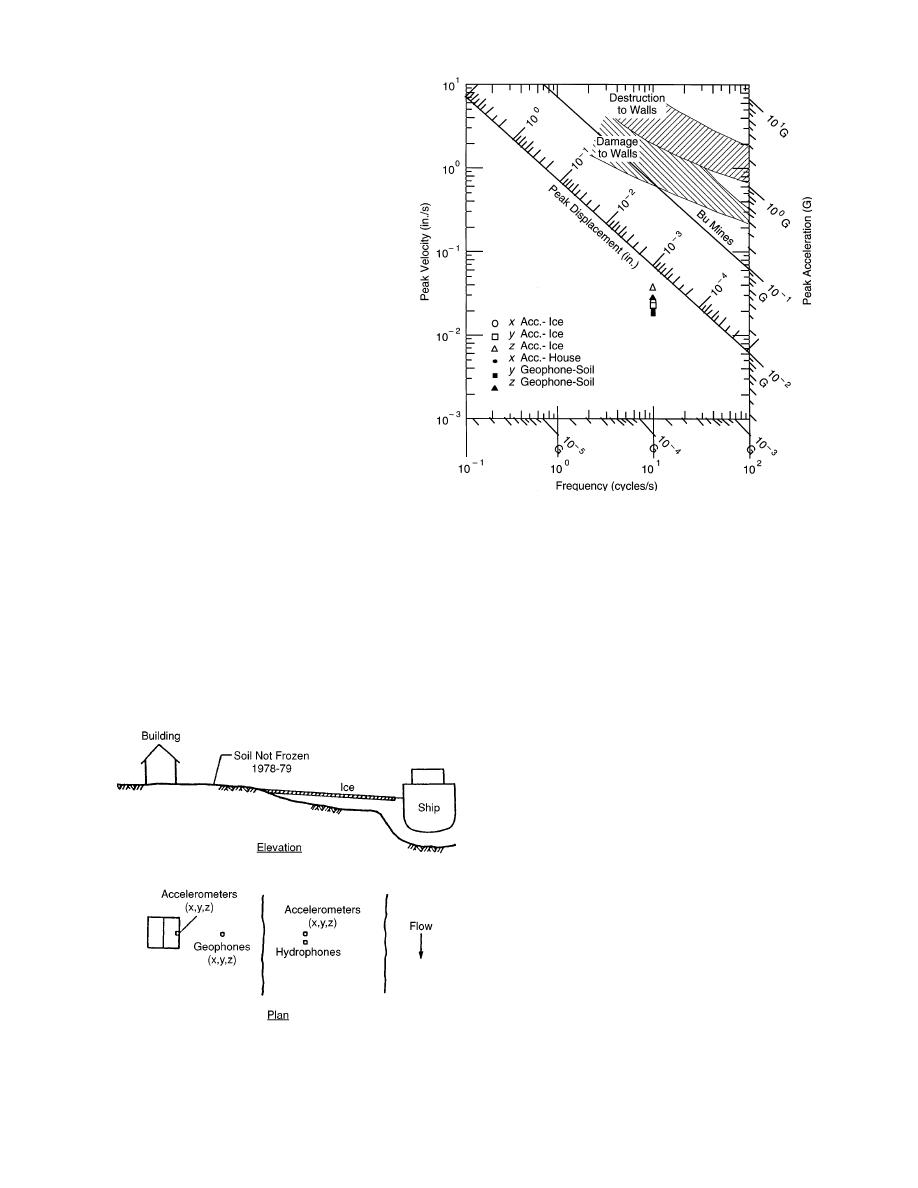
reported complaints by residents with
homes on the St. Marys River south of Sault
Ste. Marie, Michigan. The problem area is
shown in Figure 15. These vibrations were
reportedly most severe when an icebreaker
was ramming an ice accumulation, with a
thick ice cover on the river and frozen soil
between the shore and the affected struc-
ture. An ice boom was installed at Little
Rapids Cut in 1975 to control brash ice ac-
cumulation, reduce the resultant flow re-
tardation and facilitate ferry operations to
Sugar Island (Perham 1978b). The boom-in-
duced changes in ice accumulation have
also apparently mitigated the vibration
problem to some degree. Although it was
originally part of the Winter Navigation
Demonstration Program, the boom has
since become a regular feature of Corps op-
erations on the river and is redeployed each
year.
An extensive study of the onshore vi-
brations was made in the winter of 1978-
79 by Haynes and Mttnen (1981). They
Figure 17. Magnitude of vibrations for the Roger Blough pass-
instrumented two sites, the Gordon and
ing the Gordon site.
Doran sites, shown in Figure 15. The in-
strumentation at each site consisted of ac-
Analysis of the data enabled the magnitude
celerometers on a house, geophones in the soil
of the vibrations to be identified. With a frequency
between the house and shore, accelerometers on
analysis of the data, a dominant frequency asso-
the ice between the shore and the ship channel,
ciated with propeller noise was obtained for each
and a hydrophone below the ice near the acceler-
ship. The vibration magnitudes were plotted on
ometers. A layout of the instrumentation is shown
a standard vibration damage chart; a typical plot
in Figure 16. Data from all of the instruments were
is shown in Figure 17. This figure indicates the
recorded for 70 ship passages at the Gordon site
vibration levels caused by the Roger Blough as it
and 30 at the Doran site.
passed the Gordon site on 22 January 1979. Each
ship had its own distinctive dominant frequency
produced by the number of propeller blades and
shaft rpm. For the Roger Blough this frequency
was 8 Hz. In Figure 17 x is perpendicular to and
y parallel to the ship channel; z is vertical.
During the one-year study the maximum vi-
bration levels were about an order of magnitude
lower than those required to cause damage to
buildings. Vibration levels during 1979 may have
been lower than those experienced during other
winter seasons since there were no ice jams in
the river and a deep snow cover prevented the
ground from freezing. This unfrozen ground acted
to alleviate the vibration levels. In fact, a deep
snow cover (natural or artificial) or other means
of keeping the ground unfrozen could be a strat-
egy for reducing vibration levels. Two other re-
sults from the data analysis to note are:
Figure 16. Vibration instrumentation layout.
37



 Previous Page
Previous Page
